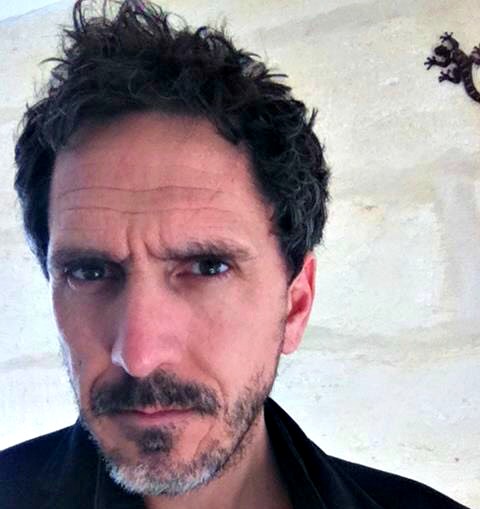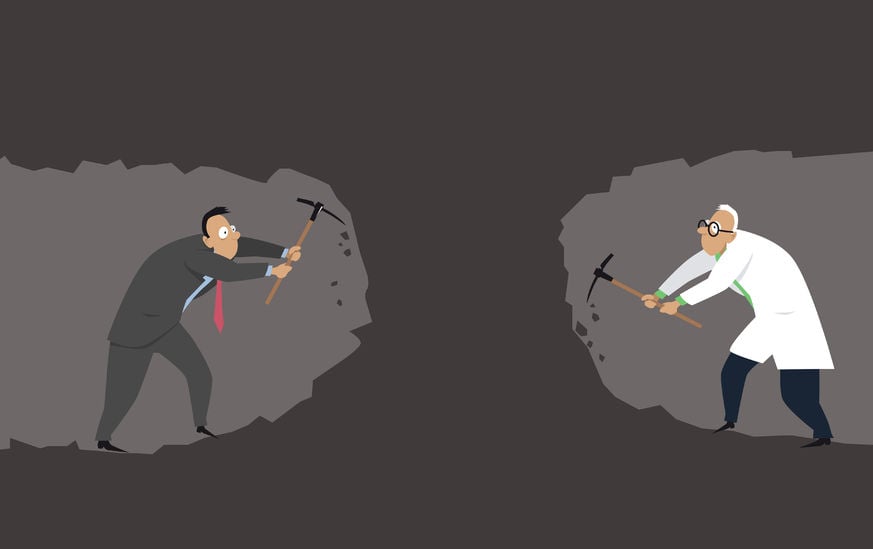While a graduate student at UC Riverside, I attended a small meeting in Santa Cruz. It was my first chance to talk about my research and I was very excited. The organizers had invited one of the luminaries in my field, and I eventually got my chance to meet him. He was gracious and kind, and I believe he even interrupted my horrible, rambling elevator pitch about my research to ask a few questions. I left the elevator—yes, it was literally an elevator pitch—invigorated. In retrospect, I suspect he may have had a laugh about it with my advisor later that night over drinks.
Over the years, my ability to briefly describe to other scientists what I do and why has improved (although, this isn’t always true of some of my colleagues, especially the brevity part). But, like many others, I flounder when explaining the “what” and “why” to someone who is not a scientist. I feel like I’m trying to explain the importance of good oral hygiene to my sons: I know it’s important, and they seem to understand that I think it’s important, but everyone involved leaves conscious of my failures to be a great communicator.
Being able to explain what you do to friends, family, people a cocktail party, or folks on an elevator is an important skill. These people are likely taxpayers that may be funding your research, and, every so often, they may actually be the politicians responsible for allocating those tax dollars. The Alan Alda Center for Communicating Science has some great tips for communicating science.
One question that inevitably emerges in such conversations is “Why is your research important?” When asked by a fellow scientist, we might reply by pointing to outstanding questions in the field, gaps in our knowledge, or hard-held beliefs that someone else has it wrong. But these types of answers are unsatisfying to non-scientists who are more likely asking about why your research might be important for society in general. Does it cure cancer? Does it make us safer?
Basic research is generally done to further scientific knowledge without obvious or immediate societal benefits. If, like me, you do basic research, the question about why your research is important for society is difficult to answer. Does it really matter if we now know that male fruit flies that have a lot of sex are less able to defend themselves against disease?
Standing on the shoulders of giants
One of the strongest arguments for the importance of basic research is that without it, the scientific discoveries and technological innovations of the last century with the greatest societal impact would have been impossible. Without basic research, it is unlikely that we would have cell phones, computers, or the internet. We wouldn’t have advances in green energy, or even an understanding of why developing green energy sources might be important for our future. And we wouldn't have new cancer treatments, HIV drug development, or the emerging promise of personalized medicine and genome editing. For all of these incredible advances, tracing back to the scientific discoveries making them possible inevitably reveals important but obscure research done by scientists not interested in creating the next Earth-shattering technological innovation, but instead just trying to use science to understand why and how things work the way they do.
So, for that 30-second pitch about the importance of basic research that you should prepare for the next time you’re stuck on an elevator with a senator, it’s probably best to be equipped with an actual example. With CRISPR-based genome editing in the news for everything from eradicating mosquitoes to treating cancer, it’s worth knowing a bit about the history of basic research leading to this incredible new technology.
The Origins of CRISPR-Cas9 genome editing technology
The case with CRISPR-Cas9 is an interesting example of the interplay of basic and applied research and how unanticipated results dramatically changed the field of molecular biology, and led to a tool of such promise that its patent has an estimated value in the billions. While the later stages of CRISPR-Cas9 genome editing technology have been intensely debated in an ongoing dispute over that very patent, some of the early developments, many obscure at the time of their discovery, are now quite well known.
In the early 1990s, as gene sequencing became more common, numerous research groups reported arrays of repeated sequences in the genomes of a variety of bacteria and archaea. The function of these sequences was unknown, and their discovery was a byproduct of research into other questions of basic scientific interest. For example, for his dissertation research, Francisco Mojica was interested in discovering how halophilic (“salt loving”) archaea are able to survive in incredibly saline environments. As part of the project he stumbled across an area of the genome containing these repeated sequences. While at the time they were just genomic oddities to Mojica, and certainly played no role in adaptation to extremely saline environments, he would later return to study these repeated sequences, which he was the first to call CRISPR, and discover that they were derived from viruses and perhaps provided a form of adaptive immune defense.
Much of the early research was also being carried out by research groups in the food industry, interested in developing molecular methods for the identification of bacterial strains involved in food production. This was true of Philippe Horvath, working at Danisco USA, a Danish food ingredient company (now owned by Dupont), who with Rodolphe Barrangou and others first demonstrated the immunological function of CRISPR, research carried out in the yogurt bacterium Streptococcus thermophilus. In 2012, Horvath would go on to publish, with lead investigator Virginijus Siksnys at Vilinius University in Lithuania, a pair of seminal papers setting the stage for the re-purposing of the CRISPR-Cas9 system for gene editing. (Similar results were published by Berkeley molecular biologists Emmanuelle Charpentier and Jennifer Doudna, at nearly the same time).
By August, 2013, the repurposing of CRISPR-Cas9 as a system for genome editing in a variety of organisms was realized by a number of different research groups. The CRISPR Craze had begun.
How did we get from there to here? In retrospect, the path from discovery to technological application seems clear enough. But in those early stages, none of those researchers could have anticipated the eventual importance of their discoveries—no one could have. Imagine meeting Francisco Mojica at a cocktail party in 1993. He wouldn’t have told you that he was studying obscure archaea Haloferax mediterranei and Haloferax volcanii because he was interested in ridding the world of malaria-spreading mosquitos or creating new treatments for cancer. Instead, there was this question about exactly how these tiny organisms were able to survive in saline environments, and he did his best to use science to answer that question. Likewise, if we met Philippe Horvath in the early 2000s, he would likely have told us about why precisely identifying bacterial strains involved in food production is important, and in particular why a highly variable gene locus would be an ideal candidate for strain identification. I suspect that he wouldn’t have told us that his discoveries would be part of a puzzle that would one day let us contemplate the end of genetic diseases such as sickle-cell anemia or cystic fibrosis. Instead, there was the question about how to use molecular biology as a tool to identify bacterial strains, and he used science to answer it.
But what about those flies that were having too much sex? I’m under no illusions that my research could one day lead to the next CRISPR. Perhaps it could help us understand why men and women differ in their susceptibility to disease, or contribute to developing new tools for battling insect pests. Who knows? I certainly can’t fully anticipate the future, and it wasn’t why I did the research in the first place. Instead, there was a question, and I did my best to use science to answer it.
Quartzy is the world’s No. 1 lab management platform. We help scientists easily organize orders, manage inventory, and save money. We’re free and always will be. Visit Quartzy.com or reach out at info@quartzy.com.
Interested in writing for The Q? Send us an email!
Share this:

Kurt McKean
Kurt McKean has studied the evolution of immune function and pathogen host interactions since his days as a PhD student at the University of California Riverside. Subsequent stops included a postdoc at Cornell University, and faculty positions at the University at Albany and Hull University. He now lives and works in Montepellier, France, teaching science, editing manuscripts, and trying to keep up with his twin boys.
